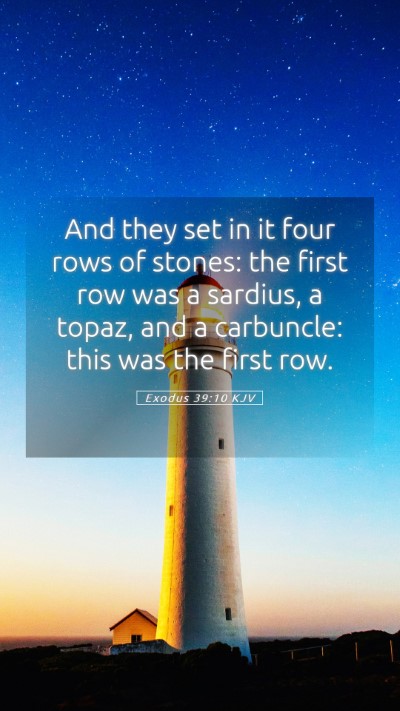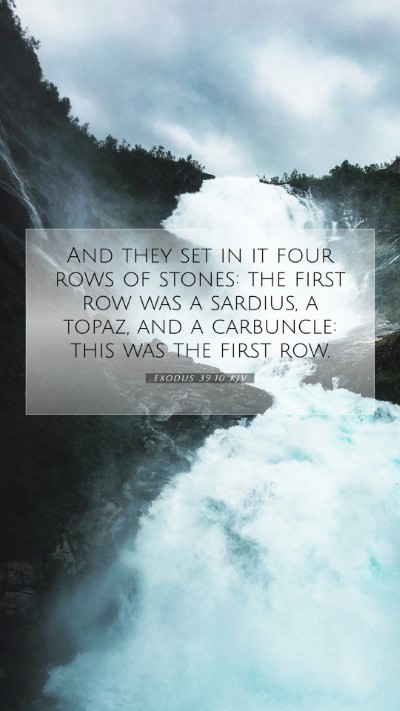Bible Verse Interpretation: Exodus 39:10
Exodus 39:10 reads: "And they set in it four rows of stones. A row of sardius, topaz, and carbuncle was the first row;" This verse describes the meticulous craftsmanship involved in the creation of the High Priest's breastplate, an essential component of the priestly garments.
Understanding Scripture: Key Insights
- Symbolism of Stones: Each stone in the breastplate is not only a literal gem but carries deep symbolic meanings, representing the twelve tribes of Israel. The first three stones—sardius, topaz, and carbuncle—represent specific tribes and their characteristics.
- Divine Order: The arrangement of the stones signifies God's order and selection, exemplifying grace and favor upon each tribe. Each tribe is distinct yet united under God's covenant.
- Historical Context: Understanding the historical context of the Israelites’ journey through the wilderness and their relationship with God is crucial to interpreting the significance of the priestly garments, including the breastplate.
Bible Verse Explanations
This verse shows the importance of carefully following God's instructions in worship. The elaborate design symbolizes the glory and holiness of God, emphasizing that worship requires reverence and exactness.
Commentary Insights
As noted in the commentaries:
- Matthew Henry: The detailed description highlights the importance of beauty and precision in the worship of God. The breastplate, with its stones representing the tribes, serves as a reminder of God’s relationship with His people.
- Albert Barnes: Barnes emphasizes that the very act of creating such a significant piece points to the gravity of the priest's role in representing the people before God, showcasing the intertwining of divine and human action.
- Adam Clarke: Clarke focuses on the spiritual implications, suggesting that the breastplate is a symbol of God's everlasting covenant with Israel, showing His protective and guiding nature.
Bible Study Insights
For individuals engaging in Bible study, this verse serves as a rich source of discussion about how worship should reflect the reverence due to God.
- Discussion Topics: Consider what it means for us today to approach God with such intentionality and care.
- Application: How can we ensure that our worship—be it personal or corporate—maintains a Spirit of holiness and accuracy in alignment with God's Word?
Cross References
Exodus 39:10 connects with several other passages that enhance understanding:
- Exodus 28:17-21: Details the specifications of the stones on the breastplate.
- Revelation 21:19-20: Describes the foundation stones of the New Jerusalem, drawing parallels to the significance of gems as symbols.
- Numbers 1:20-46: Discusses the importance of the tribes of Israel, offering context about their characteristics and roles.
Conclusion
Engaging with Exodus 39:10 through the lenses of various commentaries provides a multifaceted understanding of this verse. It invites believers to reflect on the beauty, precision, and holiness necessary in our approaches to God, while also recognizing the longstanding significance of the tribes of Israel in God's covenant history. Through proper Bible study tools and resources, deeper insight into these Bible verse meanings can be attained, enriching one's spiritual journey.


